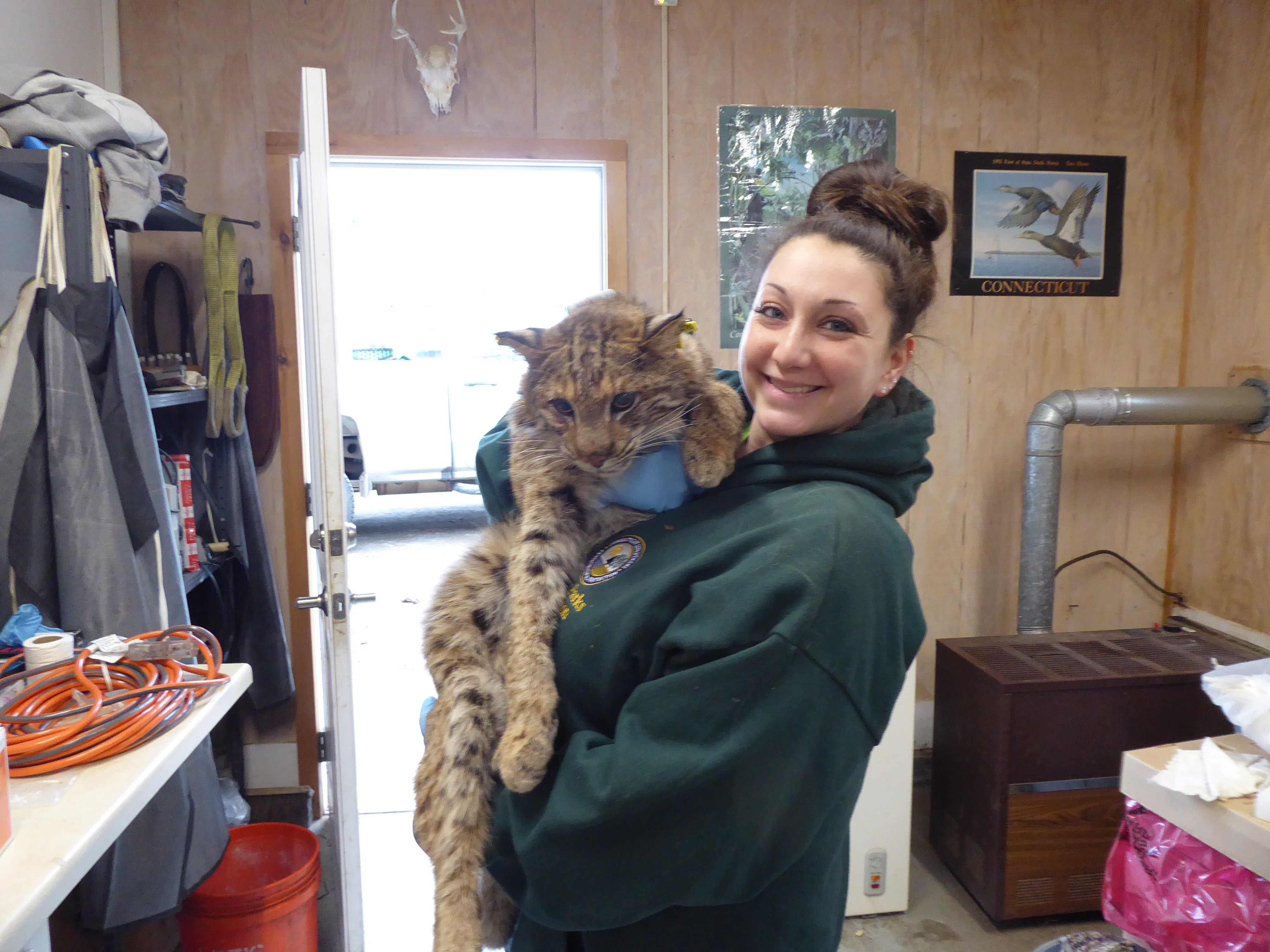By Cynthia Catapano
Local Wildlife
One chilly March morning I bundled myself up and drove a minute down the road to the High Plains Community Center, where I monitored a bobcat trap for the Connecticut Department of Energy and Environmental Protection’s Bobcat Research Project.
I arrived to a usual scene: a round ball of grey fur, sleeping soundly inside. I opened the front door, and the raccoon shuffled away to find a safer sleeping spot for the day. I was to release any non-target animals that became trapped the night before and ensure that the trap’s trigger plate was working properly. I also set up my camera trap to observe if any bobcats strolled by, either uninterested in my bait (a dead squirrel), or indifferent to the trap altogether.
I retrieved my SD card and went home. Watching the previous night’s footage of the unfortunate raccoon trying to escape, I finally saw something I’d never before caught on camera: a bobcat! I was ecstatic, but at the same time frustrated. If the trap had been vacant, I could have trapped him. I quickly brought my second trap from home to High Plains. I disguised the trap with sticks and moss, used sardines for bait, turned my camera on, and hoped for the best.
I arrived the next morning to find both traps closed. In the first was the raccoon. In the second, a pair of dilated, glaring green eyes. Growling and hissing, there was the bobcat. I was overjoyed.
Once DEEP arrived however, they delivered unfortunate news. After the bobcat was immobilized and lifted with a scale, they found he was a young male, only 13 pounds. My bobcat wasn’t large enough to wear a GPS collar. With just one collar left to deploy, there was no chance I’d trap another before the season was over. Nevertheless, any data is good data, and after measurements were taken he was released at his site of capture, sporting bright orange ear tags.
Two days after the excitement, I returned to High Plains. I couldn’t believe it: there he was again. Eager to get another glimpse, I tiptoed closer.
Where were the orange ear tags? His deep, guttural growling was far different than the hissing I’d heard before. My jaw dropped. It was a second bobcat, twice the earlier one’s size.
Shaking with excitement, I called DEEP. After two years of striving to trap a bobcat, I’d captured two individuals in just two days. It was a male, and he clocked in at 33 pounds. I followed DEEP back to headquarters for processing. Measurements were taken, a bit of fur and a tooth were pulled, and a tissue sample was collected when ear tags were applied for his identification. I was able to get a photo holding this beautiful, wild animal, thrilled that I had trapped the fiftieth and final bobcat for this season’s project.

Milford-Orange Times columnist Cynthia Catapano holds the bobcat she trapped in Orange as part of the Connecticut Department of Energy and Environmental Protection’s Bobcat Research Project. Contributed photo.
I watched his release the following day. The bobcat’s GPS collar, along with 50 others in Connecticut, will provide valuable research data via radio telemetry. Data will include information on the bobcat’s migration and dispersal patterns, home range, and activity patterns, such as continually returning to a kill site.
Through their research, DEEP discovered that bobcat sightings are not as rare as once thought. In fact, bobcat populations in Connecticut are increasing. Their adaptable nature has allowed them to thrive in highly urbanized environments, taking advantage of ample food sources such as squirrels, rabbits and other small animals.
Despite their higher numbers, seeing a bobcat prowl through our backyards will always be a fantastical and breathtaking encounter. Connecticut’s only native wildcat has come a long way since having a bounty on their heads. This experience has been one I will never forget, and I am grateful to have trapped not one, but two bobcats, not far from my own backyard.